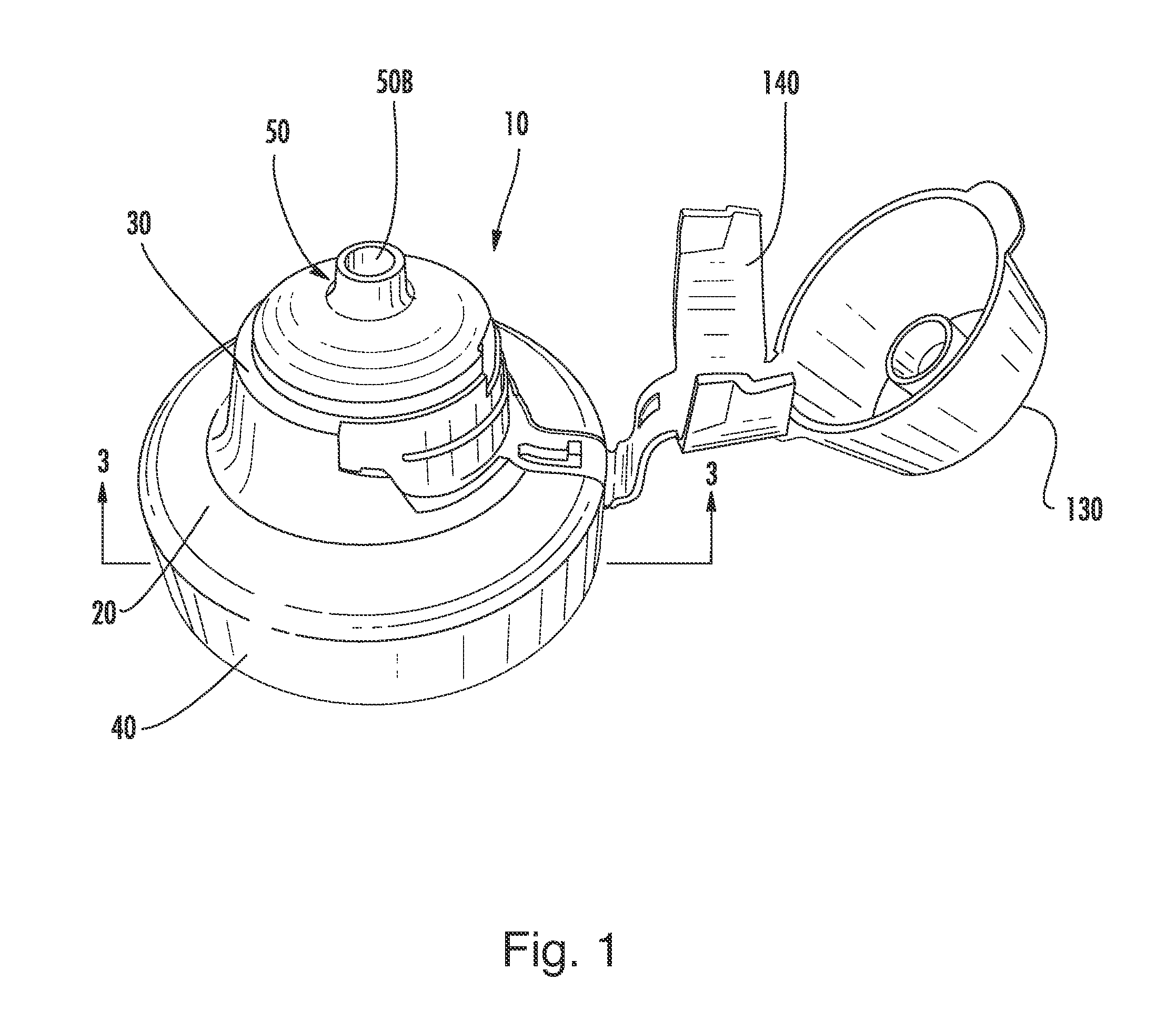Dispensing closure having a flow conduit with key-hole shape
a flow conduit and dispensing closure technology, applied in the direction of closures using stoppers, caps, liquid handling, etc., can solve the problems of difficult manufacturing, more expensive than traditional one-piece dispensing closures, and a messy appearan
- Summary
- Abstract
- Description
- Claims
- Application Information
AI Technical Summary
Problems solved by technology
Method used
Image
Examples
Embodiment Construction
Brief Description of the Drawings
[0010]The novel features which are characteristic of the dispensing closure are set forth in the appended claims. However, the dispensing closure, together with further embodiments and attendant advantages, will be best understood by reference to the following detailed description taken in connection with the accompanying drawing Figures.
[0011]FIG. 1 is a perspective view of the dispensing closure constructed in accordance with the teachings of the present invention;
[0012]FIG. 2 is a bottom view thereof;
[0013]FIG. 3 is a cross-sectional view of thereof as taken along line 3-3 of FIG. 1;
[0014]FIG. 4 is a diagrammatical view thereof;
[0015]FIG. 5 is a bottom view of another embodiment having a double key-hole shaped flow conduit;
[0016]FIG. 6 is a cross-sectional view of FIG. 5;
[0017]FIG. 7 is a diagrammatical view of invention of FIG. 5;
[0018]FIG. 8 is a cross-sectional view of another embodiment having a key-hole flap and a partition wall;
[0019]FIG. 9 ...
PUM
 Login to View More
Login to View More Abstract
Description
Claims
Application Information
 Login to View More
Login to View More - R&D
- Intellectual Property
- Life Sciences
- Materials
- Tech Scout
- Unparalleled Data Quality
- Higher Quality Content
- 60% Fewer Hallucinations
Browse by: Latest US Patents, China's latest patents, Technical Efficacy Thesaurus, Application Domain, Technology Topic, Popular Technical Reports.
© 2025 PatSnap. All rights reserved.Legal|Privacy policy|Modern Slavery Act Transparency Statement|Sitemap|About US| Contact US: help@patsnap.com



